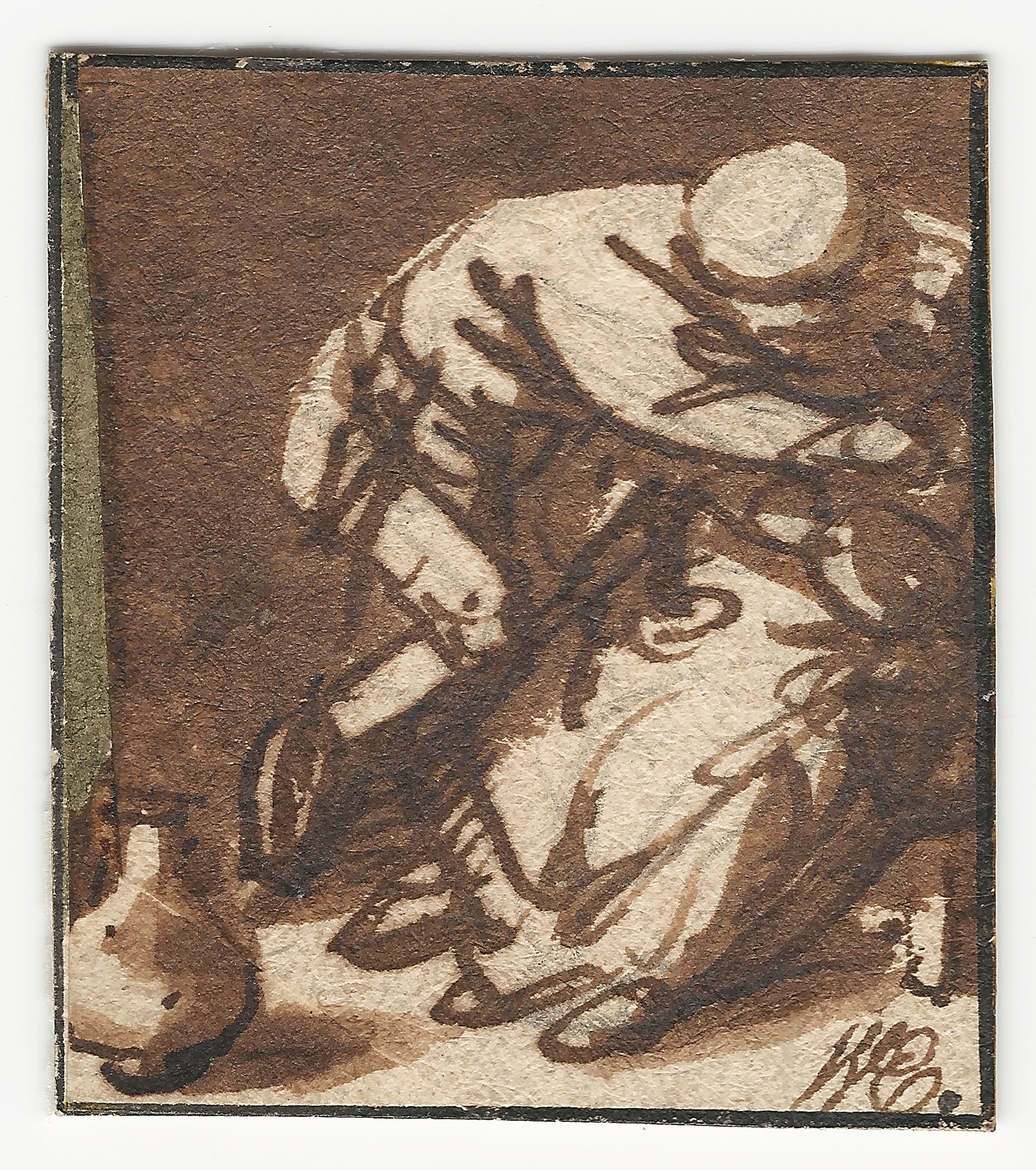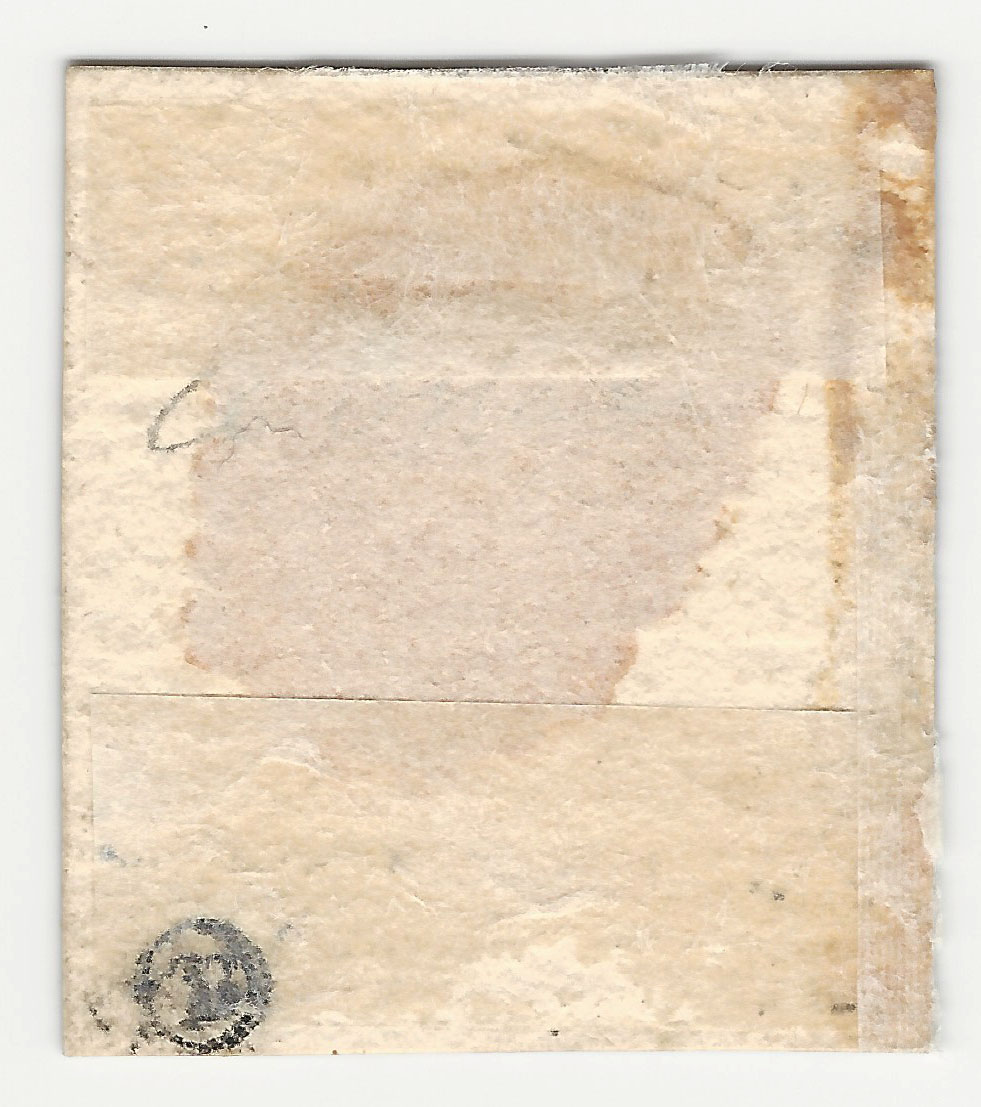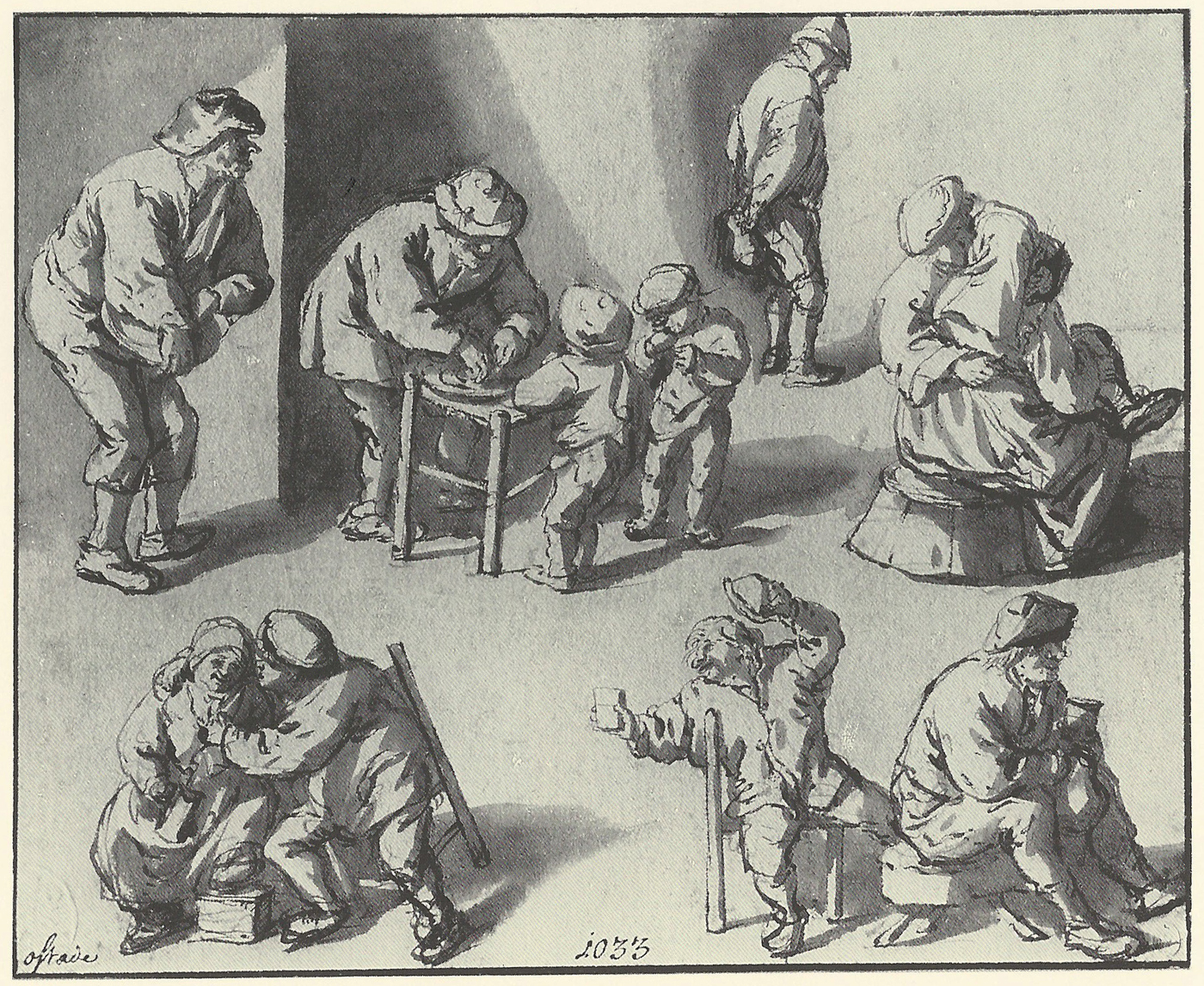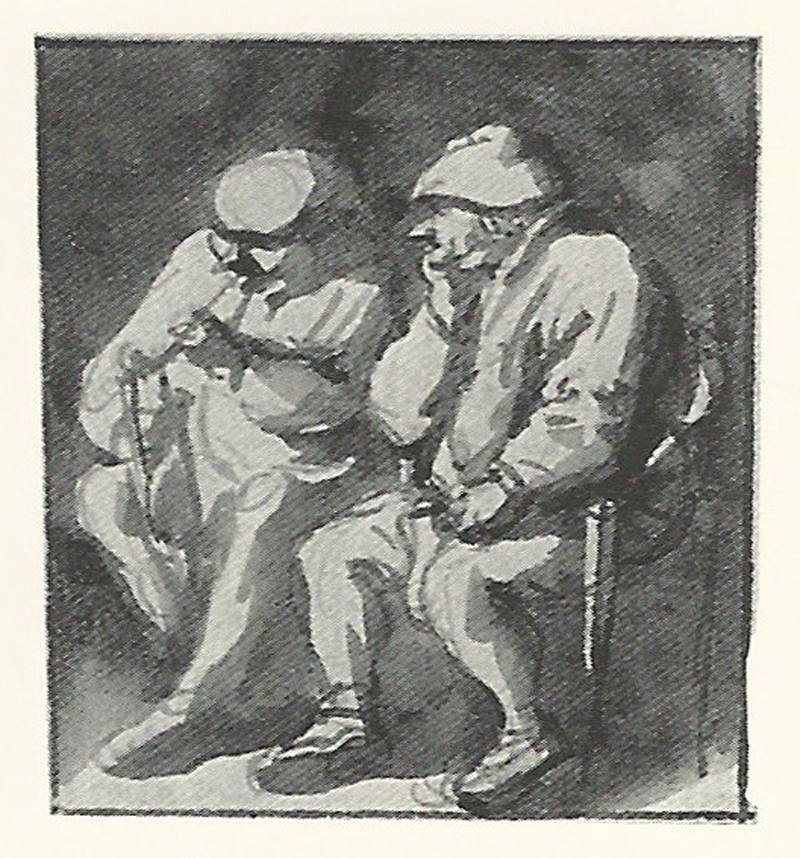ISAAC VAN OSTADE (Haarlem 1621 – 1649 Haarlem)
Isaac van Ostade (Haarlem 1621 – 1649 Haarlem)
A Man and a Woman Carousing
Black chalk, pen and brown ink, brown wash, black ink framing lines, laid down, 42 x 37 mm (1.7 x 1.5 inch)
Provenance
~ Thomas Dimsdale (1758–1823), London (Lugt 2426)
~ William Esdaile (1758–1837), London (Lugt 2617)
~ With C.G. Boerner, Dusseldorf, 1962-64
~ Dr Hermann Bünemann (1895–1976), Munich
~ Anonymous sale, Christie’s, London, 3 July 2007, lot 95
~ Private collection, Germany
Literature
~ C.G. Boerner, Ausgewählte Handzeichnungen aus vier Jahrhunderten, Neue Lagerliste, no. 34, Düsseldorf 1962, cat. no. 117 (as Adriaen van Ostade)
~ C.G. Boerner, Ausgewählte Handzeichnungen aus vier Jahrhunderten, Neue Lagerliste, no. 38, Düsseldorf 1964, cat. no. 94, plate 38 (as Adriaen van Ostade)
~ Bernhard Schnackenburg, Adriaen van Ostade, Isack van Ostade, Zeichnungen und Aquarelle, Hamburg 1964, p. 166, no. 445, plate 188
***
Isaac van Ostade was trained by his older brother Adriaen, but Isaac’s early landscape studies suggest instruction by a landscape painter, possibly Salomon van Ruysdael, who sued Adriaen in 1640 for ‘sums due for board and tuition’.1 Scholars generally agree that, had he lived, Isaac van Ostade would likely have proven the more talented of the two brothers. Isaac’s earliest dated picture is inscribed 1639; his first paintings were rustic interiors based on his brother’s paintings, but after 1642 he focused on a unique combination of peasant genre and landscape. He often painted spirited winter scenes filled with people under subtly evoked skies. His favoured subject was countrymen resting outside houses or inns, usually grouped around a white horse.
Isaac was an eager draftsman, probably for the sheer pleasure of feeling the quill scratch the paper. Few of his drawings can be directly linked to paintings.2 Pen-and-ink was his favourite medium and, like Rembrandt, he often used two different pens and inks in one drawing. In 1643 Isaac joined the painters’ guild and simultaneously committed himself to a new style. His manner took on an Italianate delicacy in the handling of figures, architecture, and foliage. Isaac’s drawings seem to have been inherited by his brother, Adriaen, and then passed to the latter’s pupil, Cornelis Dusart (1660–1704), in whose inventory hundreds of drawings by the Ostade brothers are mentioned. Dusart frequently embellished the pen and ink drawings in his possession with brown washes, and it is possible that this is also the case here, as Schnackenburg suggested.3
This charming and vigorous sketch is dated to around 1641-42 by Dr Schnackenburg. He also observed that small figure sketches such as this work were originally part of larger sheets with several studies.4 One such sheet which has survived intact with comparable studies of peasants carousing is preserved in Staatliche Graphische Sammlung in Munich (fig.).5 An example of another fragment from a larger sheet is in the Louvre, Paris (fig.).6
SOLD
1. For the artist, see I. van Thiel-Stroman, ‘Isaack Jansz van Ostade’, in: Painting in Haarlem 1500-1850. The collection of the Frans Hals Museum, Ghent/Haarlem 2006, pp. 261-262.
2. For Isaac’s drawings, see B. Schnackenburg, Adriaen van Ostade, Isack van Ostade, Zeichnungen und Aquarelle, Hamburg 1964 and P. Schatborn, ‘Tekeningen van Adriaen en Isack van Ostade’, Bulletin van het Rijksmuseum 34 (1986), pp. 82-92.
3. Schnackenburg, op. cit. p. 166.
4. Schnackenburg, loc. cit.
5. Pen and brown ink, brown wash, 158 x 188 mm, inv. no. 1848; Schnackenburg, op. cit., p. 168, no. 459, plate 192. Schnackenburg dates this sheet to 1642-43.
6. Pen and brown ink, brown wash, 59 x 53 mm, inv. no. 22793; Schnackenburg, op. cit. p. 168, no. 457, plate 190. Schnackenburg dates this sheet to 1641-42.



